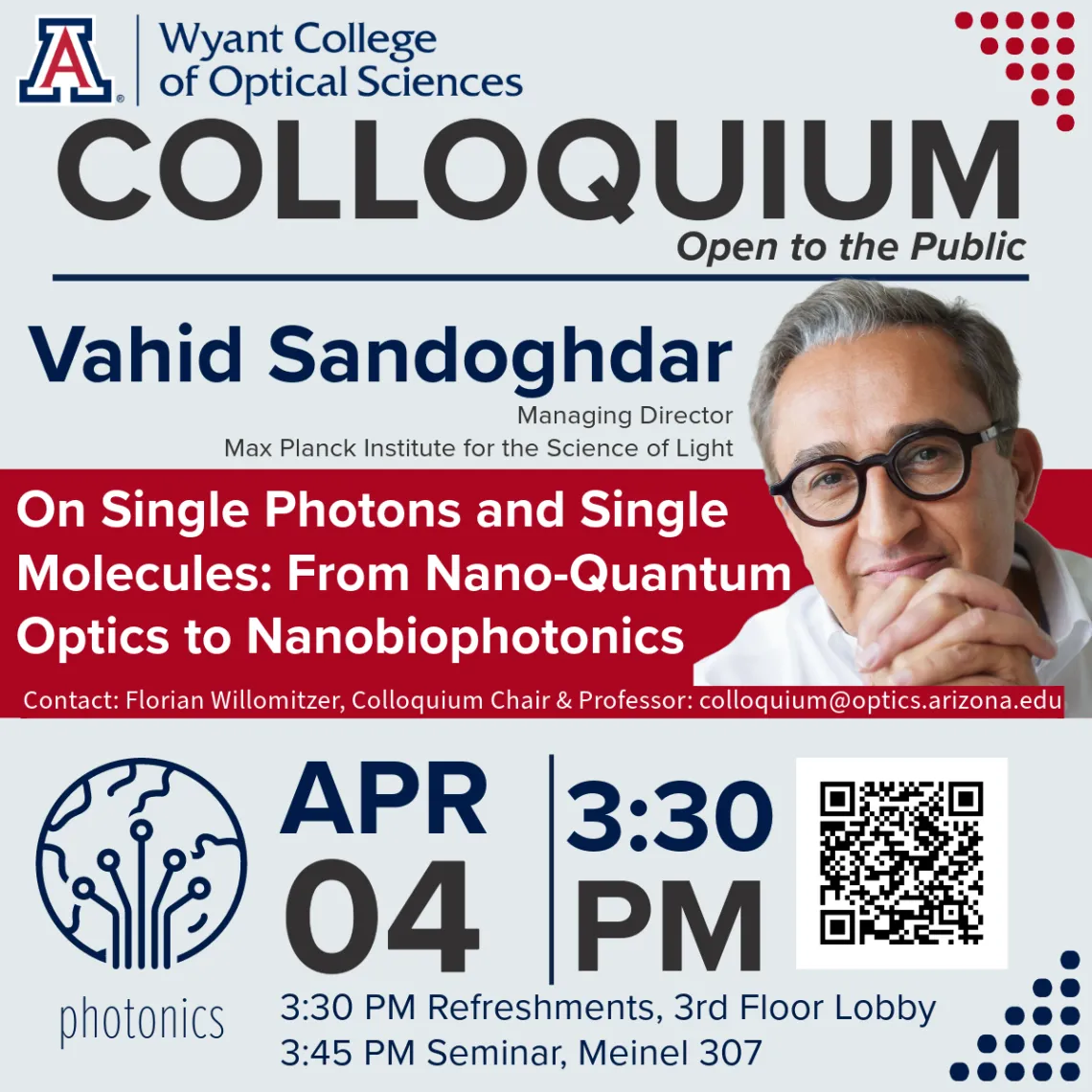
When
Where
Title
On Single Photons and Single Molecules: From Nano-Quantum Optics to Nanobiophotonics
Abstract
Light-matter interaction at the nanometer scale lies at the heart of elementary optical processes such as absorption, emission or scattering. Over the past two decades, we have realized a series of experiments to investigate the interaction of single photons, single molecules and single nanoparticles. In this presentation, I will report on recent studies, where we reach unity efficiency in the coupling of single photons to single molecules in a microcavity and describe our efforts to exploit this for the realization of polaritonic states involving a controlled number of molecules and photons. Furthermore, I will show how the underlying mechanisms that play a central role in quantum optics, help detect, image and track single biological nanoparticles such as viruses and small proteins with high spatial and temporal resolutions and in a label-free fashion.
Bio
Vahid Sandoghdar was born in 1966 in Tehran, Iran. He obtained his B.S. in physics (1987) from the University of California at Davis and Ph.D. in atomic physics (1993) from Yale University. After a postdoctoral stay at the Ecole Normale Supérieure in Paris, he moved to the University of Konstanz in Germany to start a new line of research that combined single molecule spectroscopy, scanning probe microscopy and quantum optics. In 2001, he took on a professorship at the Laboratory of Physical Chemistry at ETH in Zurich, Switzerland. In 2011, he became director at the Max Planck Institute for the Science of Light in Erlangen and Alexander von Humboldt Professor at the Friedrich-Alexander University of Erlangen-Nuremberg in Germany. Sandoghdar is one of the pioneers of Nano-Optics, which merges various research methods to investigate the interaction of light and matter at the nanometer scale. His work was honored with the Quantum Electronics and Optics Prize of the European Physical Society for “ground-breaking research on the efficiency of light-matter interaction in quantum optics and biophysics, leading to single-molecule strong coupling and label-free detection of small proteins.” He is the founder of the Max-Planck-Zentrum für Physik und Medizin, a joint research center that addresses questions in fundamental medical research with physical and mathematical methods.
Can't Join Us In Person?
Register for the Zoom Webinar!
Subscribe to Upcoming Colloquium Announcements
Visit our website for future lecture dates and speaker information
